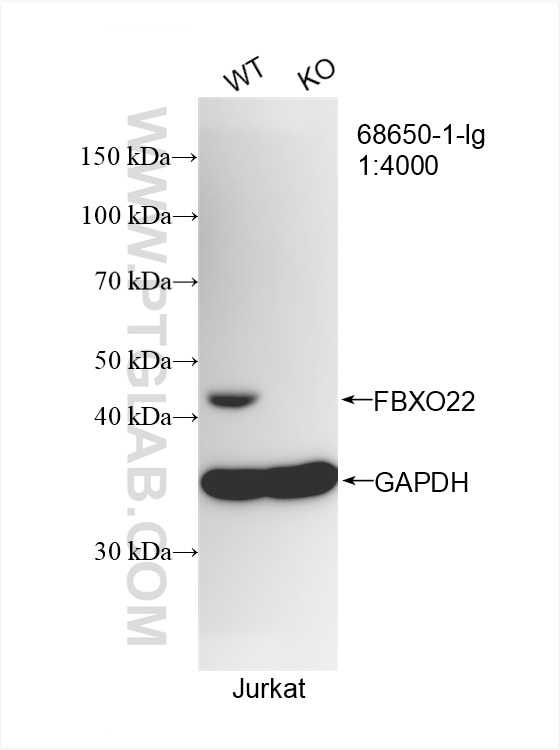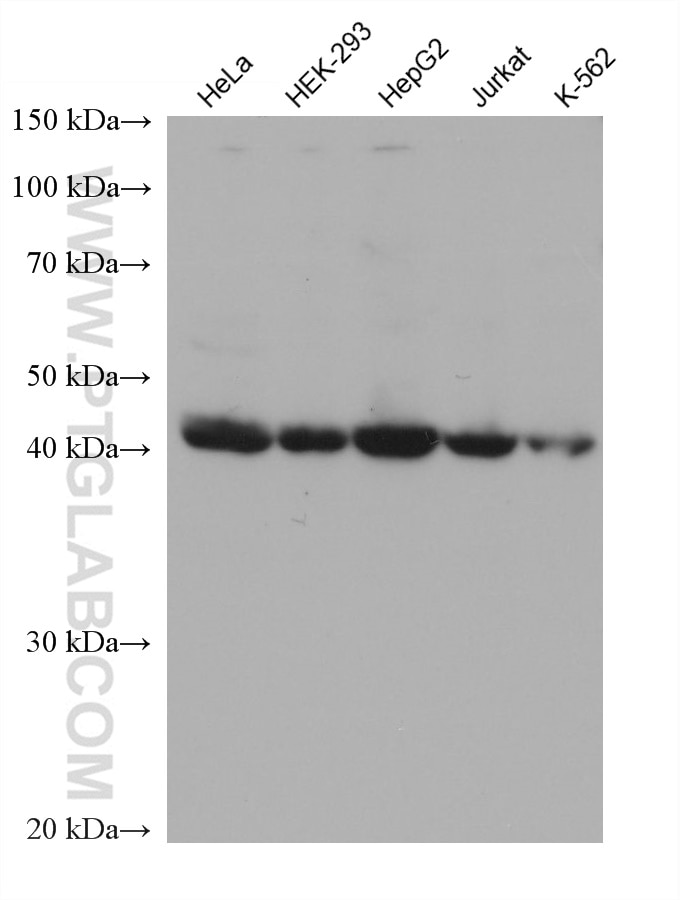Tested Applications
| Positive WB detected in | HeLa cells, Jurkat cells, HEK-293 cells, HepG2 cells, K-562 cells |
Recommended dilution
| Application | Dilution |
|---|---|
| Western Blot (WB) | WB : 1:5000-1:50000 |
| It is recommended that this reagent should be titrated in each testing system to obtain optimal results. | |
| Sample-dependent, Check data in validation data gallery. | |
Product Information
68650-1-Ig targets FBXO22 in WB, ELISA applications and shows reactivity with human samples.
| Tested Reactivity | human |
| Host / Isotype | Mouse / IgG1 |
| Class | Monoclonal |
| Type | Antibody |
| Immunogen | FBXO22 fusion protein Ag5294 Predict reactive species |
| Full Name | F-box protein 22 |
| Calculated Molecular Weight | 403 aa, 45 kDa |
| Observed Molecular Weight | 45 kDa |
| GenBank Accession Number | BC039024 |
| Gene Symbol | FBXO22 |
| Gene ID (NCBI) | 26263 |
| RRID | AB_3670392 |
| Conjugate | Unconjugated |
| Form | Liquid |
| Purification Method | Protein G purification |
| UNIPROT ID | Q8NEZ5 |
| Storage Buffer | PBS with 0.02% sodium azide and 50% glycerol , pH 7.3 |
| Storage Conditions | Store at -20°C. Stable for one year after shipment. Aliquoting is unnecessary for -20oC storage. 20ul sizes contain 0.1% BSA. |
Background Information
FBXO22, also named as FBX22, is a substrate-recognition of the SCF (SKP1-CUL1-F-box protein)-type E3 ubiquitin ligase complex. FBXO22 is a key regulator of senescence induction through ubiquitylation of p53 for degradation. FBXO22 also acts as a molecular switch for the antagonistic and agonistic actions of selective estrogen receptor modulators (SERM) and determines the sensitivity of breast cancer to SERM by ubiquitylating KDM4B complexed with unliganded or SERMs‐bound estrogen receptor (ER). (PMID: 32536008, PMID: 32249768)
Protocols
| Product Specific Protocols | |
|---|---|
| WB protocol for FBXO22 antibody 68650-1-Ig | Download protocol |
| Standard Protocols | |
|---|---|
| Click here to view our Standard Protocols |





